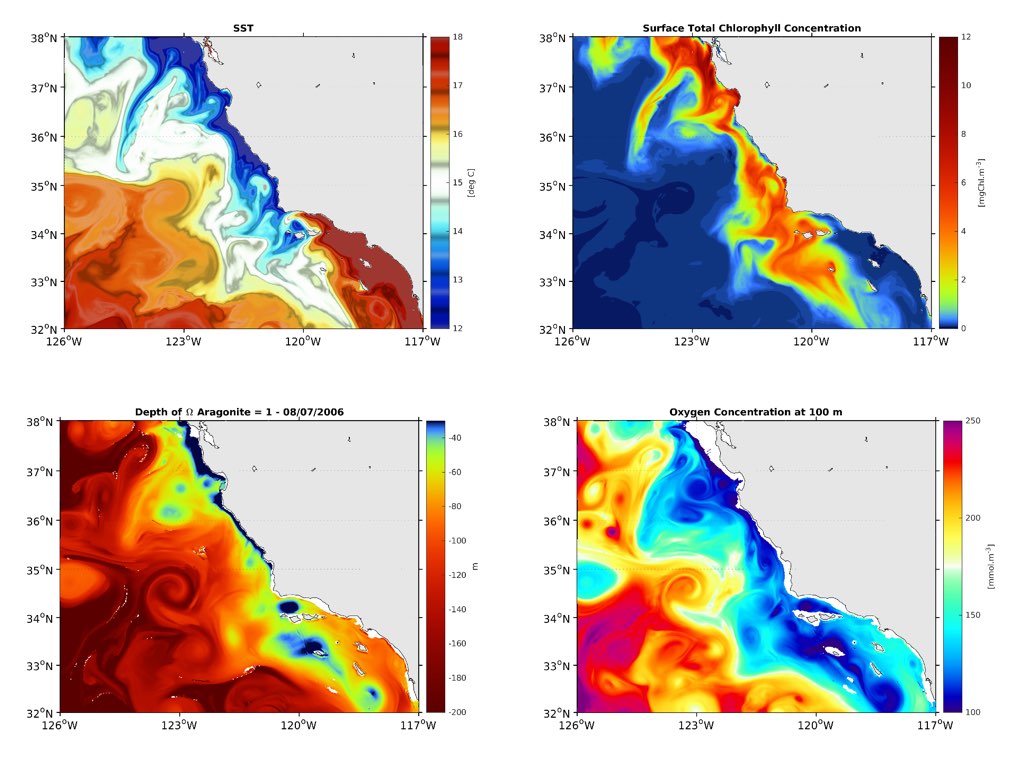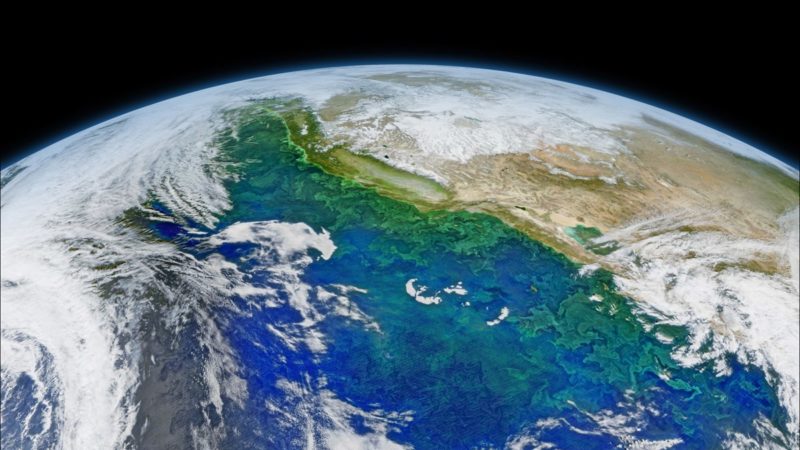The following scientific questions will be addressed: (1) How do the cycles of carbon, oxygen, and nutrients function in the CCS in the presence of large-scale natural variability and anthropogenic CO2 inputs and climate changes? (2) How much do local inputs of nutrients and CO2 contribute to altered oceanic primary productivity and OHA? (3) How do rates of OHA from local inputs compare to trends originating from basin-scale climate change and remote transports of anthropogenic CO2? (4) What are the physiological impacts of OHA on lower trophic level organisms (e.g., pteropods), and what are valid empirical and model-expressed relationships between biological response and the OHA state variables? (5) Which areas of the coast are most susceptible to OHA and how will susceptibility change between now and mid-century?
This is a large research project funded by NOAA and the California Ocean Protection Council to assess the controlling processes for the biologically harmful geochemical signals of low dissolved oxygen and high acidity (low pH) in the waters along the U.S. West Coast by means of an integrated regional atmospheric — physical circulation — and biogeochemical/ecosystem compututational simulation model. The project is led by Prof. James McWilliams at UCLA with local partners Drs. Lionel Renault, Faycal Kessouri, and Mark Gold and Profs. Richard Ambrose and Daniele Bianchi. There are further partnerships with Prof. Curtis Deutsch, Dr. Nina Bednarsek, and Harmut Frenzel (U. Washington), Drs. Richard Feely and Simone Aline (NOAA Pacific Marine and Environmental Laboratory), and Drs. Steve Weisberg, Martha Sutula, and Karen McLaughlin (Southern California Coastal Water Research Project).
The primary tasks of the project are the following: (1) Develop a coast-wide OHA model of the CCS (Baja California to British Columbia) based on the Regional Oceanic Modeling System (ROMS), comprised of circulation, biogeochemical cycles, lower-trophic ecosystem, a rudimentary food web for higher-trophic animals, with regional down-scaling into coastal sub-regions with finer spatial resolution in the simulation. The model will be used for validation against measurements in an historical reanalysis, for demonstration of the consequences of local pollution inputs, and for a forecast of the likely future trends in OHA. (2) Collect and analyze laboratory and field data on ecologically important pteropod species to derive empirically-based sensitivities of biological rates to OHA and temperature, and then incorporate them into the model as new ecosystem parameterizations. (3) Use the model to understand relative contributions of the various drivers of OHA in the CCS. (4) Transmit these findings to coastal zone managers and help them explore the implications for marine resource management and pollution control.
The accompanying figure shows instantaneous spatial distributions for several of the key model variables.

Figure caption: Maps from the simulation model along the Central and Southern California coast for 8 July 2006. Clockwise from upper-left: Sea Surface Temperature; Chlorophyll A concentration (phytoplankton abundance); the depth of the Aragonite saturation threshold (Ω = 1), below which calcium carbonate shells are vulnerable to dissolution by excess acidity); and dissolved oxygen concentration at a depth of 100 m (compared to a typical surface concentration > 260 mmol/m^3). Notice the pattern imprints of coastal upwelling and mesoscale eddies, as well as the indicated vulnerability of near-surface organisms to hypoxia and acidification.
The California Current System (CCS) is one of the most biologically productive regions of the world ocean, but seasonal coastal upwelling of low oxygen and low-pH waters (i.e., Ocean Hypoxia and Acidification, OHA) make it particularly vulnerable to even small additional reductions in O2 and/or pH. Both reductions have been measured in recent decades and are expected to decrease further in future as part of global climate change. Three prominent coastal phenomena have been implicated in these changes: (1) large-scale (global) acidification and deoxygenation of subsurface waters associated with global warming and increased CO2; (2) natural climate variability from years to decades; and (3) local anthropogenic pollution of coastal waters, especially from nutrients in waste-water discharges, agricultural run-off, and atmospheric pollution deposition. The relative importance of these drivers remains to be evaluated, and this is critical information in any cost-effective strategy to manage coastal resources at local scales. Disentangling the magnitude and interaction of these different ecosystem stressors requires an integrated systems modeling approach that is carefully evaluated against available measurements.
Contact: James McWilliams, jcm@atmos.ucla.edu

